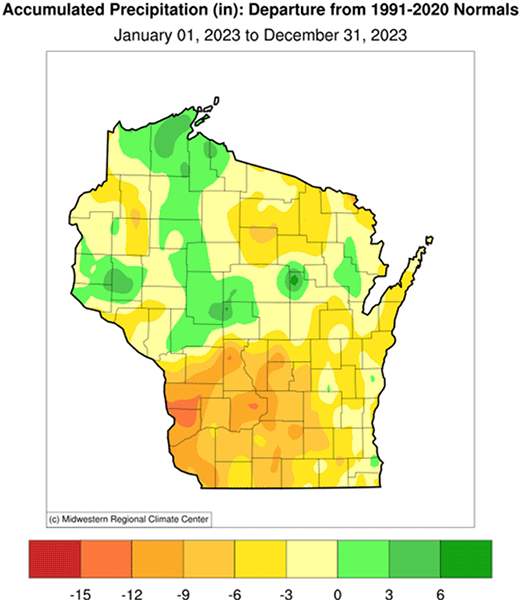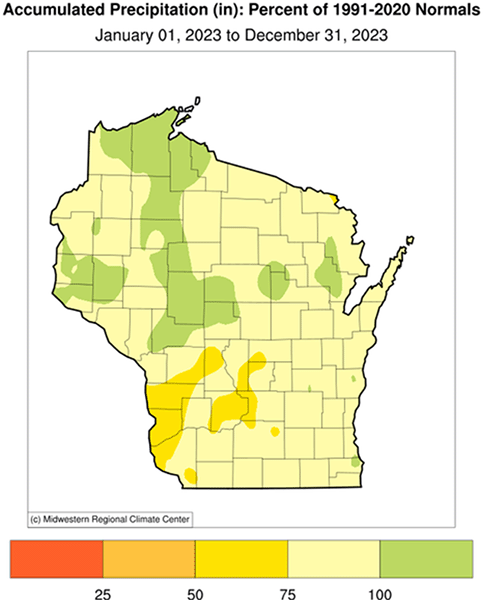In 2023 Wisconsin experienced record drought along with unusually warm temperatures. There were also precipitation extremes in both directions: record wet and nearly record dry. Here is a brief synthesis of conditions during the past calendar year.
Read more 2023 monthly and seasonal climate summaries
Exceptional Warmth
Although drought captured the most attention as the major weather story of 2023, the year quietly emerged as Wisconsin’s fourth-warmest on record, tied with 1987. The primary contributors were the record-breaking temperatures during December and the fifth-warmest January on record. September was also exceptional as the sixth-warmest.
Remarkably, the only month cooler than the long-term average (1895-2023) was July, and it was a mere 0.7o degrees Fahrenheit below (see graph below). Globally, 2023 was easily the warmest year on record, so Wisconsin followed suit by landing among its own top five. The table below lists the 10 warmest years and indicates that most of these have occurred during the past two decades.
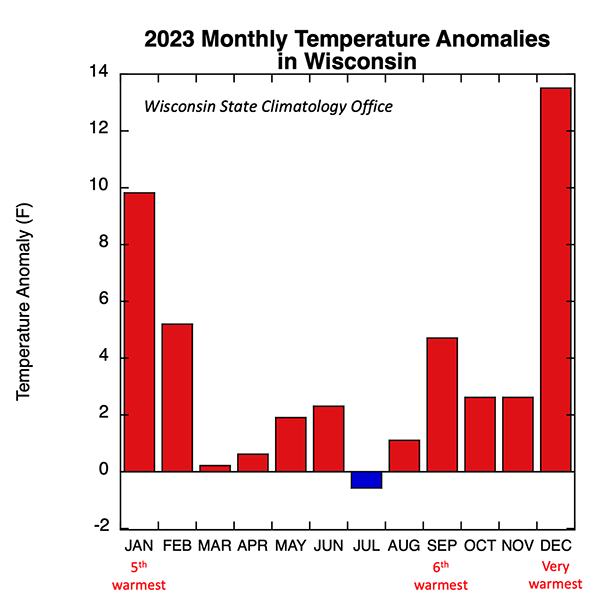
| Year | Annual Temperature (F) | Rank |
|---|---|---|
| 2012 | 47.4 | 1 |
| 1998 | 47.3 | 2 |
| 1931 | 47.0 | 3 |
| 2023, 1987 | 46.3 | 4 |
| 2016 | 46.2 | 6 |
| 2006 | 46.0 | 7 |
| 2021 | 45.8 | 8 |
| 1921 | 45.6 | 9 |
| 2010 | 45.5 | 10 |
Everywhere in Wisconsin was unusually warm in 2023. Annual temperature anomalies were at least 1 degree Fahrenheit throughout the state, except for a few isolated pockets. Most of Wisconsin was 2o-3o degrees Fahrenheit above 1991-2020 normals, and a few places exceeded 3o. In general, temperature anomalies (departures from average) across large areas are more spatially consistent than precipitation anomalies.
Additional evidence of last year’s exceptional warmth comes from the number of daily high and low temperature records at Wisconsin’s “first-order” weather stations, which are situated in Milwaukee, Madison, La Crosse, Eau Claire, Wausau, and Green Bay. During 2023 these six locations tallied 74 record-warm daily high temperatures and 86 record-warm overnight low temperatures. By contrast, there were only nine reports of record-cold daily highs and just 3 record-cold daily low temperatures.
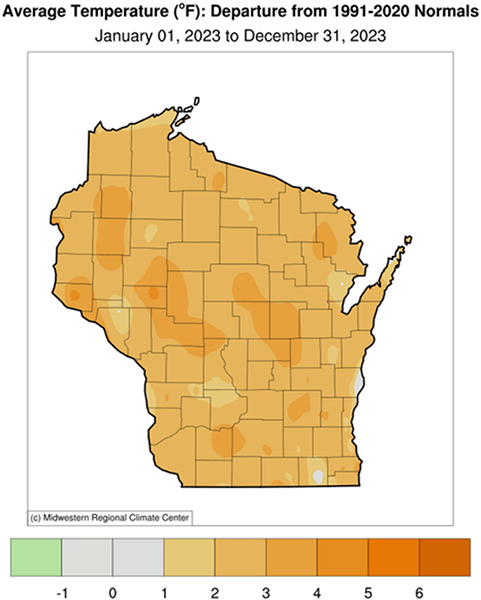
Precipitation Ping Pong
2023 was memorable for its month-to-month precipitation extremes in both directions: record wet and nearly record dry. After January to April set a record for the wettest start to a year in Wisconsin, the subsequent months were the fourth-driest May to August, followed by an exceptionally wet October, then the eighth-driest November, and culminating in a slightly wetter-than-normal December.
The graph below illustrates these back-and-forth precipitation anomalies statewide this year, relative to the entire long-term average spanning 1895 to 2023. Interestingly, the accumulated precipitation for the entire year was only 5 percent short of the long-term average — despite all the intra-annual “precipitation ping pong.”
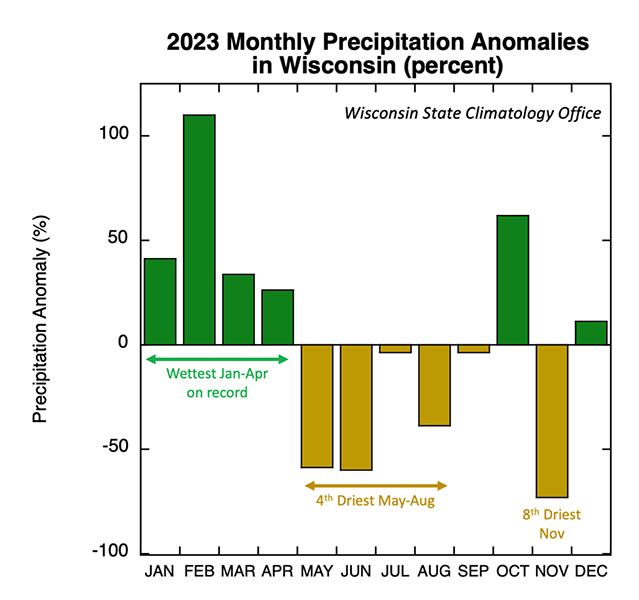
Averages can therefore be deceiving. In addition to the huge monthly swings in statewide precipitation last year, there were also very large spatial variations in the annual totals. The most dramatic and impactful anomalies occurred in southern and southwestern Wisconsin, which suffered the most extreme drought conditions. Most of this region experienced an annual precipitation shortfall of at least 6 inches, and some unlucky locations across portions of Vernon and Crawford Counties were more than a foot below normal. These areas hardest hit by the drought received only 50-75 percent of normal annual precipitation, which represents a very big deficit for an entire calendar year.
